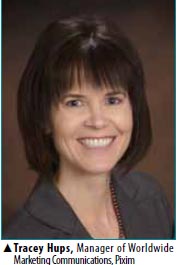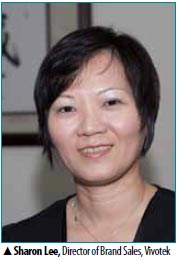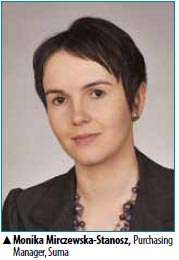Into the second decade of the 21st century, gender imbalance and discrimination issues are still hotly debated in society. However, the ever-changing mentalities and practices in business — and in security — are creating new and interesting professional development options for women.
Into the second decade of the 21st century, gender imbalance and discrimination issues are still hotly debated in society. However, the ever-changing mentalities and practices in business — and in security — are creating new and interesting professional development options for women.
In February 2011, former UK trade minister Evan Mervyn Davies released an independent review on the lack of female members in the country's corporate boardrooms. This year, more than 30 percent of the positions have gone out to females, as opposed to under 15 percent from the previous year, showing a favorable increase. Davies recommended that companies listed in the FTSE 100 index should aim for 25 percent of female members on their boards by 2015. A similar gender imbalance phenomenon was analyzed by US political scientist Micah Zenko in a July article, where he commented on the lack of female representatives in the US foreignpolicy community.
 Gender imbalance in the workforce is definitely not a new topic. What is new, however, is that in the two examples above, this acute imbalance was voiced by men. The “fight” for equal opportunities seems to have shifted focus to an issue that everyone, regardless of gender, needs to consider.
Gender imbalance in the workforce is definitely not a new topic. What is new, however, is that in the two examples above, this acute imbalance was voiced by men. The “fight” for equal opportunities seems to have shifted focus to an issue that everyone, regardless of gender, needs to consider.
It has not always been rainbows and butterflies for women in the security industry, either. “I'm inspired by the women in the industry who started when there were almost no women at all,” said Tracey Hups, Manager of Worldwide Marketing Communications at Pixim. “They worked hard to earn knowledge and experience, but had to fight even harder to be respected for it. They had to persevere through tough times and harsh atmospheres.”
 In Vivotek's sales team, currently one out of every four representatives are female. “We do not select candidates based on their gender, but based on their qualifications,” explained Sharon Lee, Director of Brand Sales. “Women are not less knowledgeable about electronics or lack industry expertise. As long as one is sufficiently professional, respect will be gained and is not subject to gender.” In security, the gap is closing. It is agreed that the number of females occupying top management positions has experienced growth, although slower than anticipated. “I do see more women taking on these roles; however, the percentage of women in executive positions is still in single digits,” Hups said. “In contrast, far more than 50 percent of administrative positions are filled by women.”
In Vivotek's sales team, currently one out of every four representatives are female. “We do not select candidates based on their gender, but based on their qualifications,” explained Sharon Lee, Director of Brand Sales. “Women are not less knowledgeable about electronics or lack industry expertise. As long as one is sufficiently professional, respect will be gained and is not subject to gender.” In security, the gap is closing. It is agreed that the number of females occupying top management positions has experienced growth, although slower than anticipated. “I do see more women taking on these roles; however, the percentage of women in executive positions is still in single digits,” Hups said. “In contrast, far more than 50 percent of administrative positions are filled by women.” 
 One reason for this change is because more educated women have gravitated to the field in general, observed Lisa Pryse, President of Health Care Division, Old Dominion Security. “Another reason is due to broadminded CEOs and boards of directors.” There are definitely more women in IP surveillance than a few years ago, added Monika Mirczewska- Stanosz, Purchasing Manager of Suma. “Perhaps not many are in top management positions, but I do see more female managers overseeing regional sales or IP surveillance departments.” “I haven't witnessed a massive trend toward more female leaders in the security field,
One reason for this change is because more educated women have gravitated to the field in general, observed Lisa Pryse, President of Health Care Division, Old Dominion Security. “Another reason is due to broadminded CEOs and boards of directors.” There are definitely more women in IP surveillance than a few years ago, added Monika Mirczewska- Stanosz, Purchasing Manager of Suma. “Perhaps not many are in top management positions, but I do see more female managers overseeing regional sales or IP surveillance departments.” “I haven't witnessed a massive trend toward more female leaders in the security field,  although I do see a lot of successful female sales leaders. In some divisions, like marketing and public relations, women have been known to have more flexibility and growth options,” said Courtney Mamuscia, Director of Marketing for Video Intelligence Solutions, Verint Systems. “In an industry dominated by men, who wouldn't want a smart female sales representative to introduce some of the latest product and technology innovations?”
although I do see a lot of successful female sales leaders. In some divisions, like marketing and public relations, women have been known to have more flexibility and growth options,” said Courtney Mamuscia, Director of Marketing for Video Intelligence Solutions, Verint Systems. “In an industry dominated by men, who wouldn't want a smart female sales representative to introduce some of the latest product and technology innovations?”
Early Days
Women often enter the industry with a related educational background, from a related industry or based on individual skill sets.
 “I graduated with a graduate degree in electrical engineering, and chose to work for a megapixel-camera manufacturer in order to put my education to use,” said Becky Zhou, Sales Director for APAC, Arecont Vision. “The breakdown of males versus females in the industry largely depends on personal interest. Fresh graduates who enter the industry are mostly from majors like engineering, computer science and other relate fields, and these majors have a higher male-student percentage to begin with.” According to the US Department of Education, statistical figures of female bachelor degree graduates from engineering and engineering technologies majors across the U.S. show a decrease of 5.2 percent from 2004 to 2009, and the actual student count of 13,961 is far less than the male student count at 70,675. In computer and information sciences for the same time period, the female graduate count stands at 6,779, which trails behind the male count at 31,215. In both studies, a fivefold difference exists between male and female graduate counts in these educational fields.
“I graduated with a graduate degree in electrical engineering, and chose to work for a megapixel-camera manufacturer in order to put my education to use,” said Becky Zhou, Sales Director for APAC, Arecont Vision. “The breakdown of males versus females in the industry largely depends on personal interest. Fresh graduates who enter the industry are mostly from majors like engineering, computer science and other relate fields, and these majors have a higher male-student percentage to begin with.” According to the US Department of Education, statistical figures of female bachelor degree graduates from engineering and engineering technologies majors across the U.S. show a decrease of 5.2 percent from 2004 to 2009, and the actual student count of 13,961 is far less than the male student count at 70,675. In computer and information sciences for the same time period, the female graduate count stands at 6,779, which trails behind the male count at 31,215. In both studies, a fivefold difference exists between male and female graduate counts in these educational fields.
Those with prior work experience in IT, physical security and other technology-related industries joined the security industry by chance. “I was a police lieutenant when I was offered in the late '80s an opportunity to build a small police and security department for a large trauma center,” Pryse recalled. “Once I took this position and began to build the department, I realized just how much I did not know about hospital security and how much the regulations and environment change from year to year. It is that challenge of maintaining and improving security and safety in a forever changing health care environment that has kept me motivated in this industry.”
 Often, early work experience became the reason why women rejoin later. “I worked for PSA Security Network to put myself through college, but left as soon as I graduated with a degree in communications,” Hups said. “A couple of years later, PSA had a marketing job open up, and they asked me to apply for it. I got the job and have been in the security industry ever since.” Women with a strong sales and marketing skill set discover that the security industry is dynamic and full of opportunities. “I entered the security industry in 2010 after spending the previous 15 years in the electronics and test and measurement industries,” said Wendi Burke, Director of Global Marketing Communications, IQinVision. “As a marketer for advanced technology, I was presented with several attractive incentives and opportunities to make a significant impact on the company's position in the security market, which I could not pass up.”
Often, early work experience became the reason why women rejoin later. “I worked for PSA Security Network to put myself through college, but left as soon as I graduated with a degree in communications,” Hups said. “A couple of years later, PSA had a marketing job open up, and they asked me to apply for it. I got the job and have been in the security industry ever since.” Women with a strong sales and marketing skill set discover that the security industry is dynamic and full of opportunities. “I entered the security industry in 2010 after spending the previous 15 years in the electronics and test and measurement industries,” said Wendi Burke, Director of Global Marketing Communications, IQinVision. “As a marketer for advanced technology, I was presented with several attractive incentives and opportunities to make a significant impact on the company's position in the security market, which I could not pass up.”
 Changing technologies have also created opportunities for women outside the industry to join. “I previously worked in public administration but have always been keen on technology. I learned of my company from social acquaintances, and that IP surveillance is emerging as a new industry,” Mirczewska-Stanosz recounted. “It seemed exciting to become part of a company that deals with new solutions and to explore new markets.” One of the reasons that keeps women in this industry is the challenges and rewarding experiences they face on a daily basis. “Technology is evolving rapidly, and there are a lot of opportunities to make a big difference to customers,” said Kelly Romano, President of Global Security Products, UTC Fire & Security. After 27 years with UTC, Romano feels that there is still much to learn, but prior experience can be applied directly. “More than 20 years of developing customer relationships and partnering with them have given me much insight into how to make a meaningful difference. The industry structure is similar — it's all about relationships, channel strategy and technology.”
Changing technologies have also created opportunities for women outside the industry to join. “I previously worked in public administration but have always been keen on technology. I learned of my company from social acquaintances, and that IP surveillance is emerging as a new industry,” Mirczewska-Stanosz recounted. “It seemed exciting to become part of a company that deals with new solutions and to explore new markets.” One of the reasons that keeps women in this industry is the challenges and rewarding experiences they face on a daily basis. “Technology is evolving rapidly, and there are a lot of opportunities to make a big difference to customers,” said Kelly Romano, President of Global Security Products, UTC Fire & Security. After 27 years with UTC, Romano feels that there is still much to learn, but prior experience can be applied directly. “More than 20 years of developing customer relationships and partnering with them have given me much insight into how to make a meaningful difference. The industry structure is similar — it's all about relationships, channel strategy and technology.”